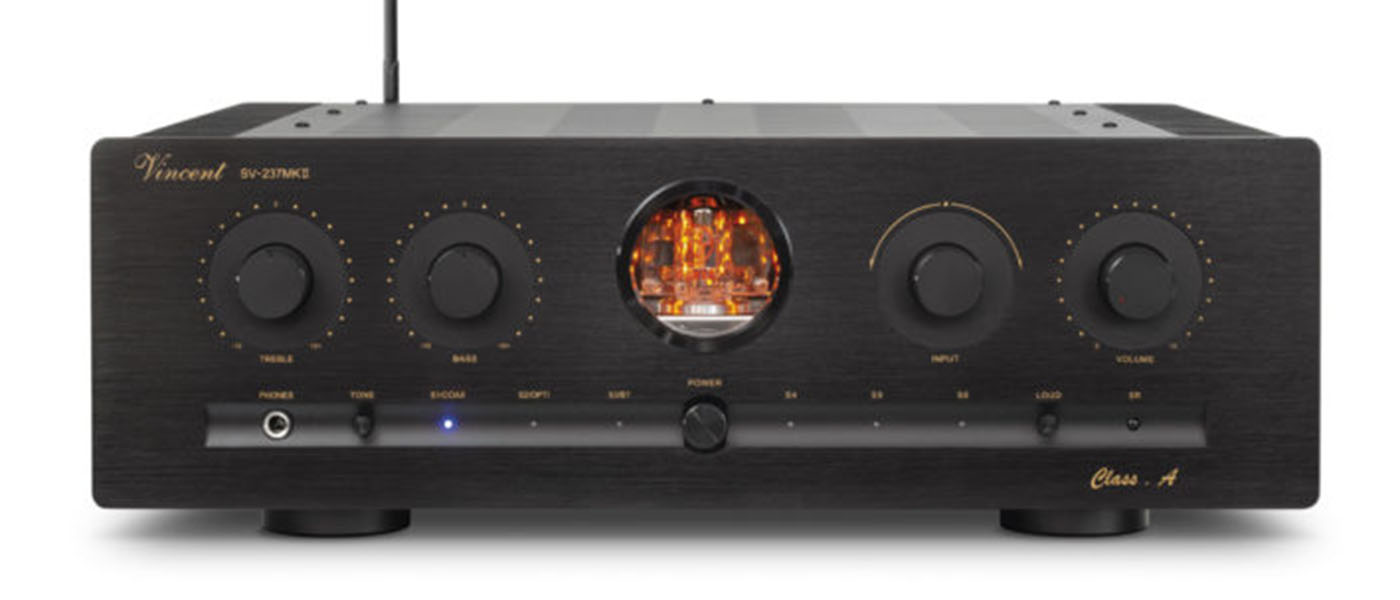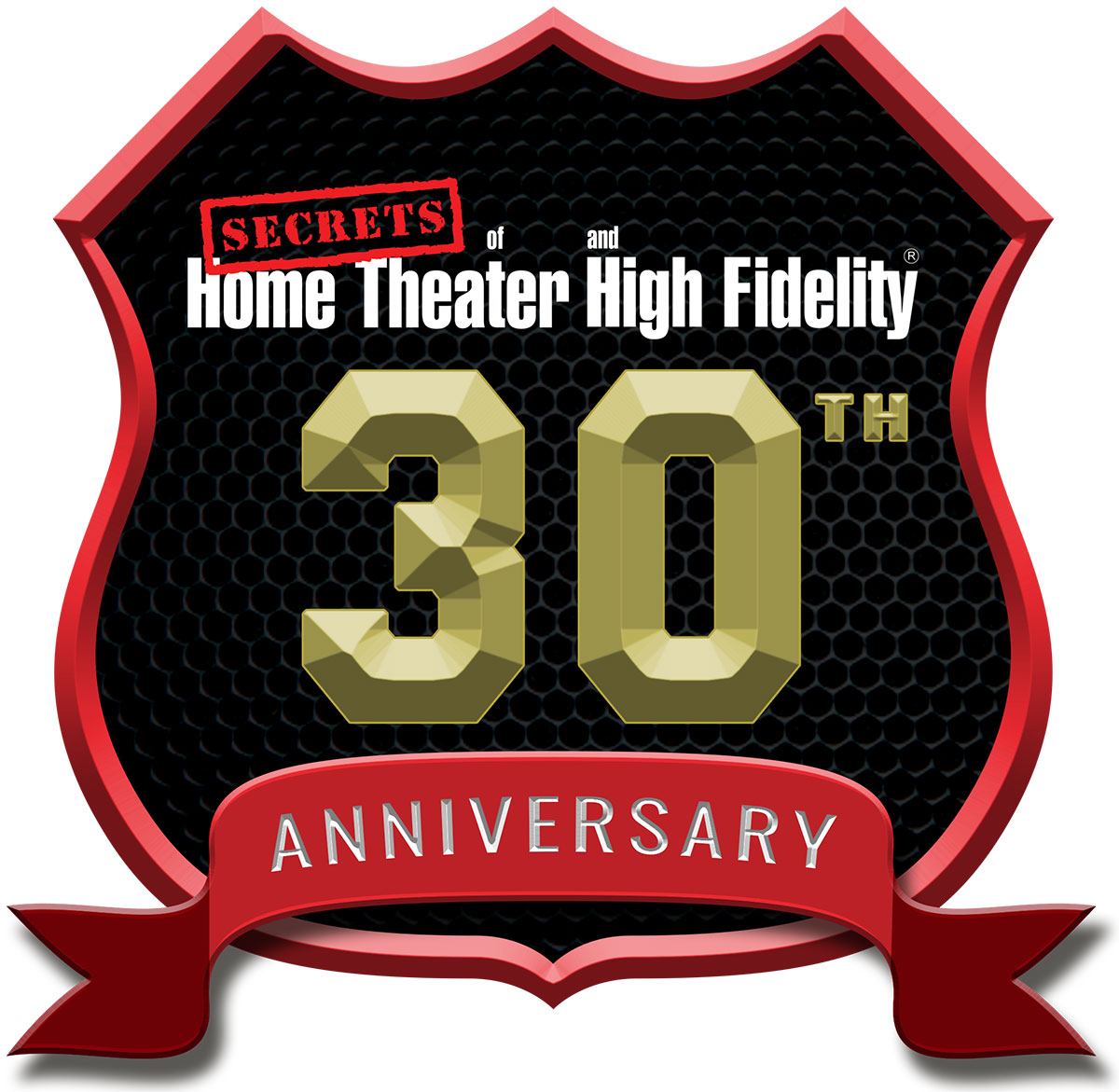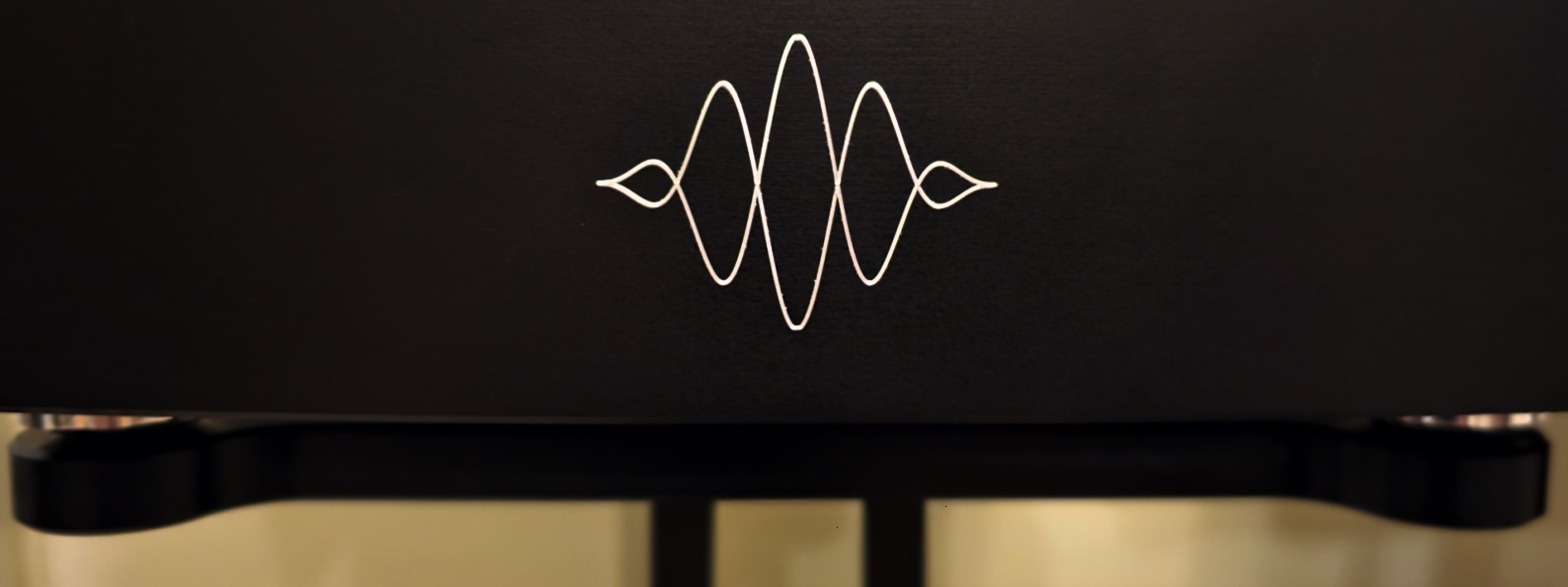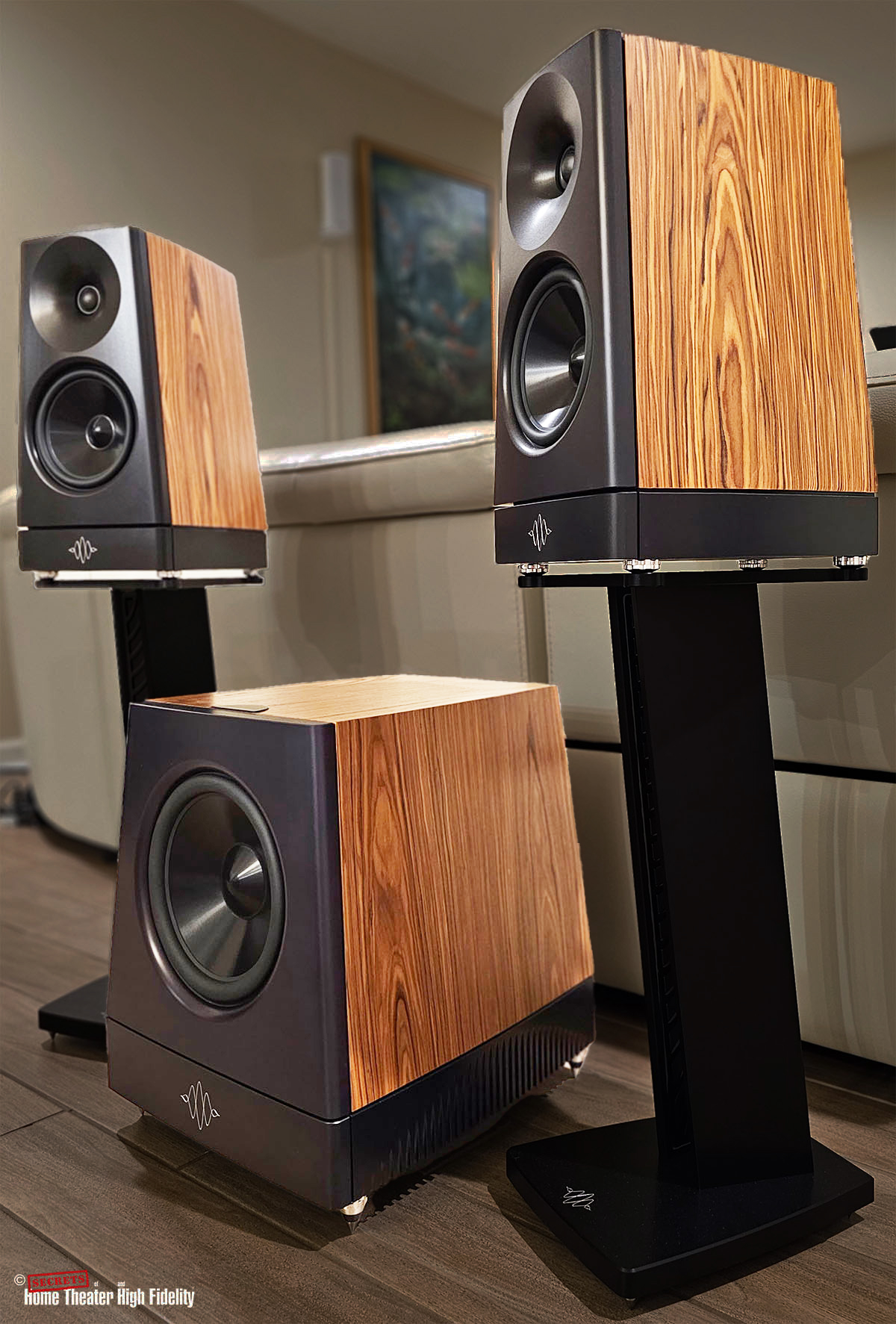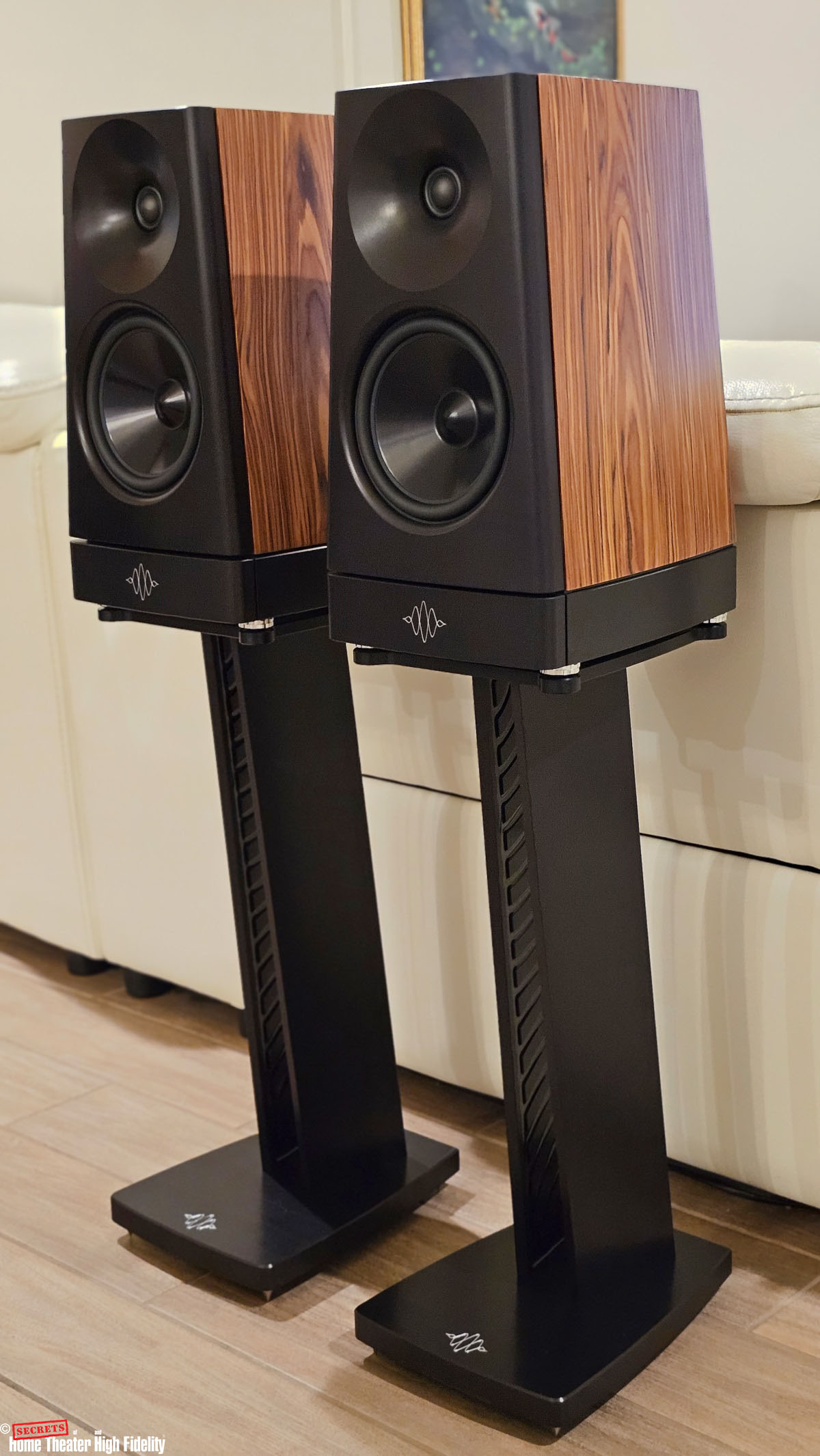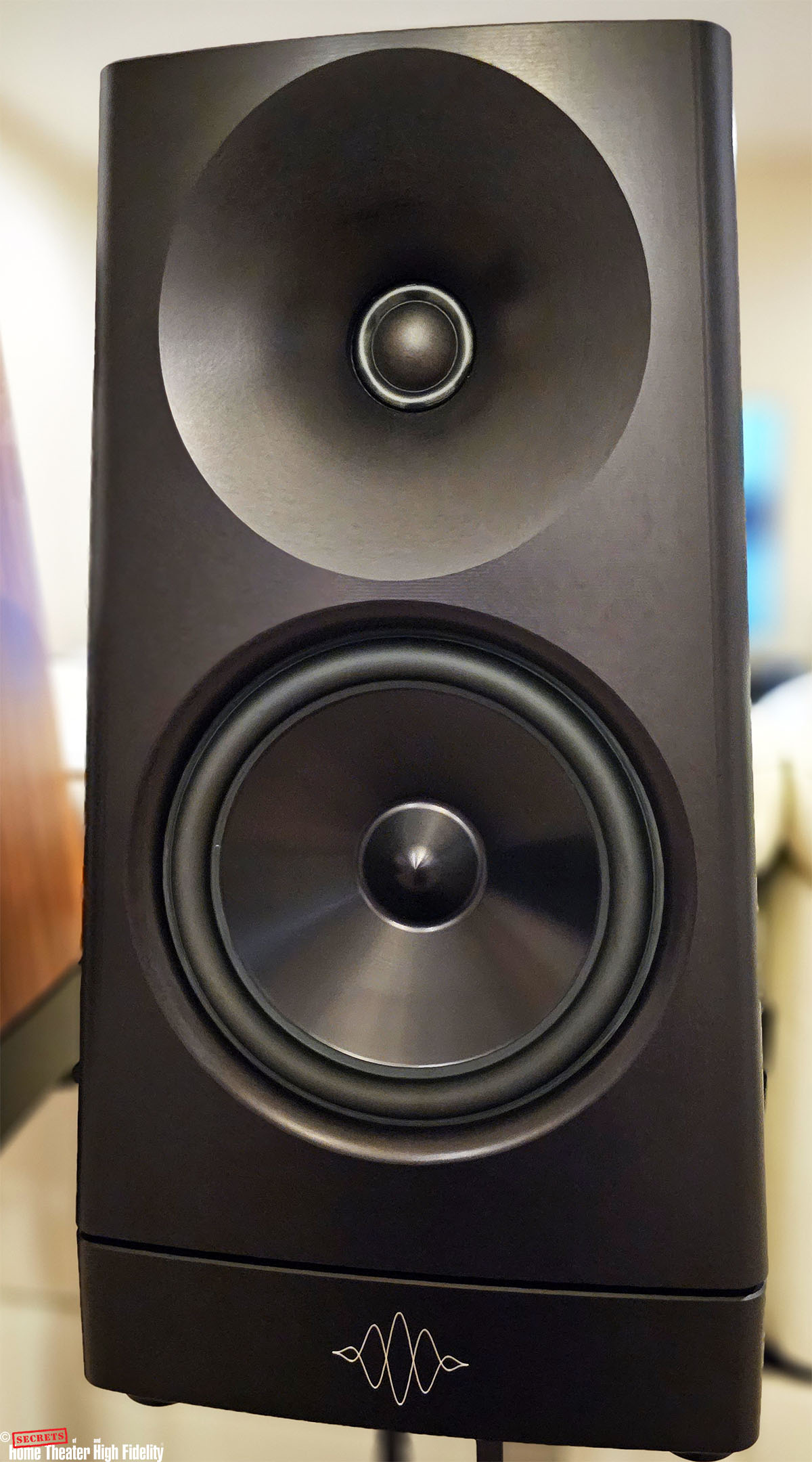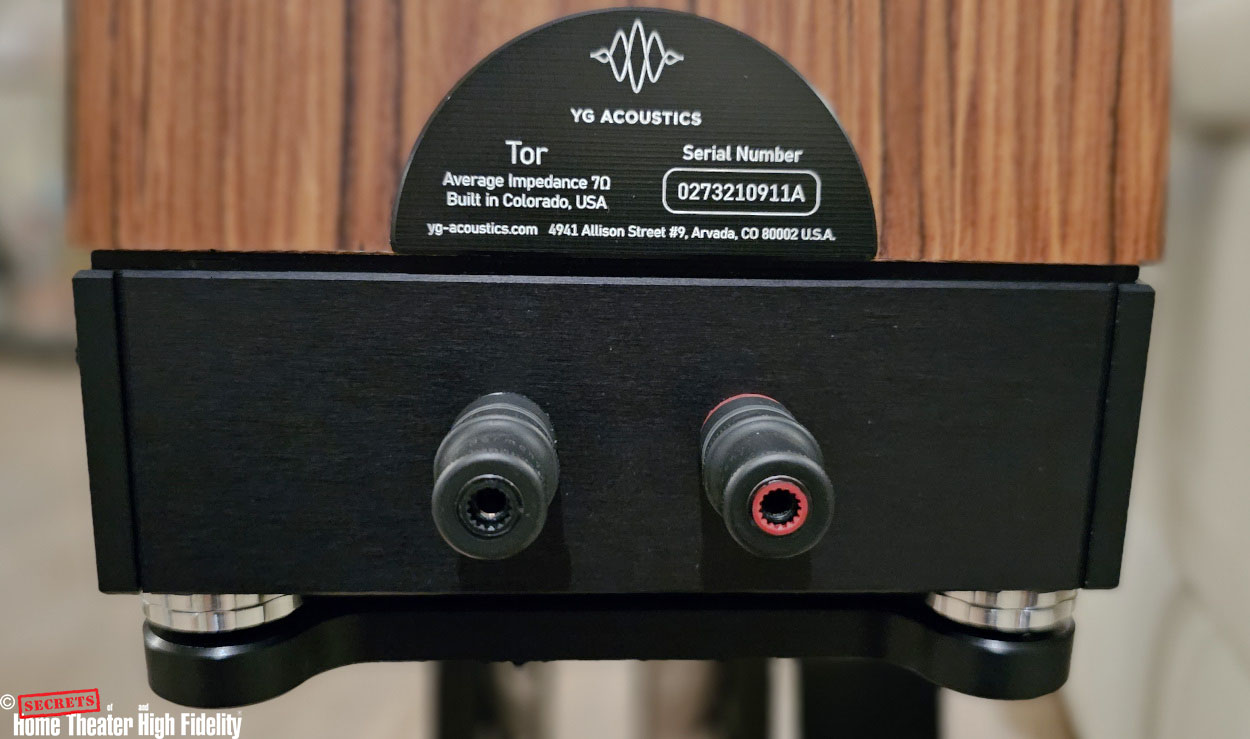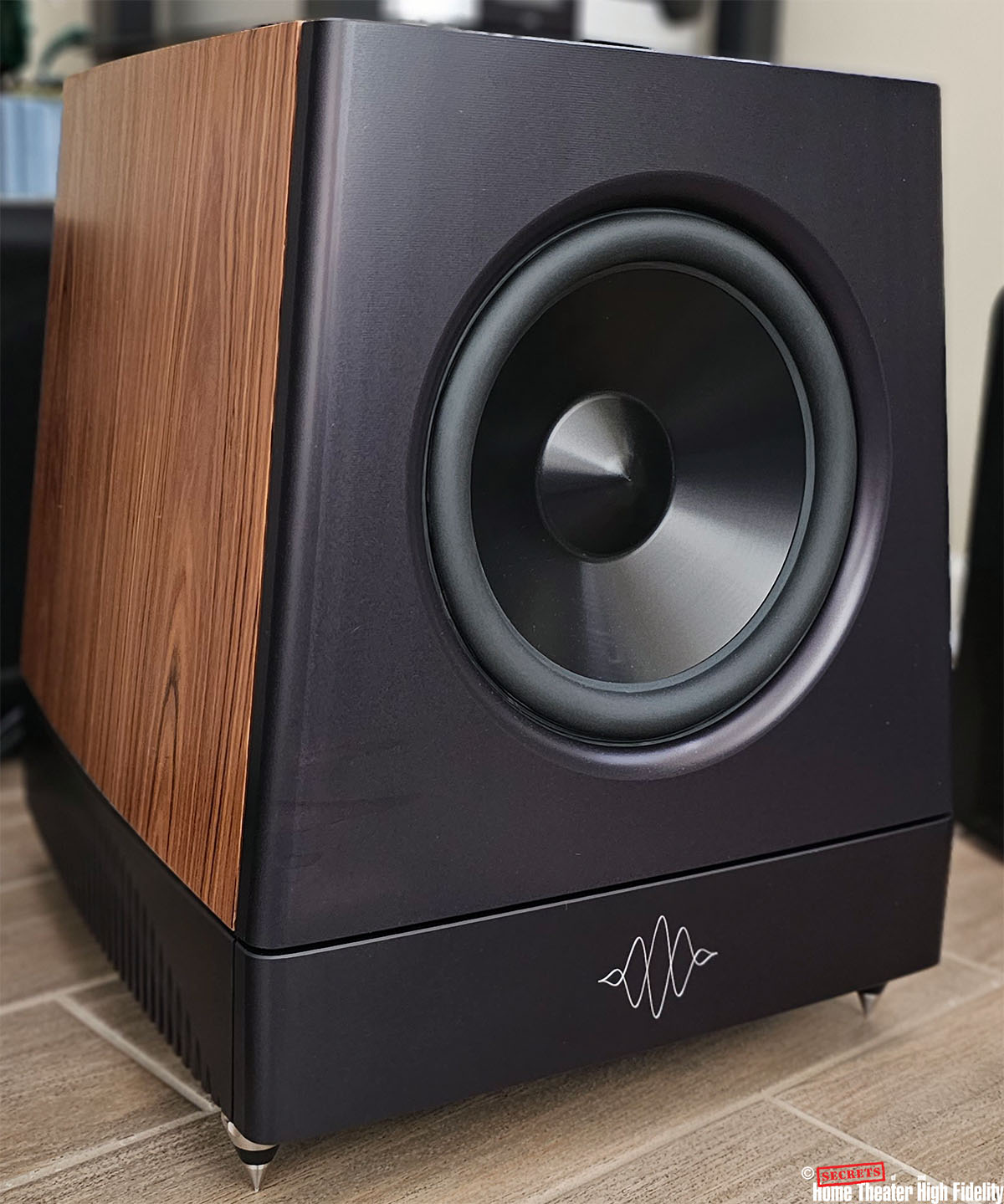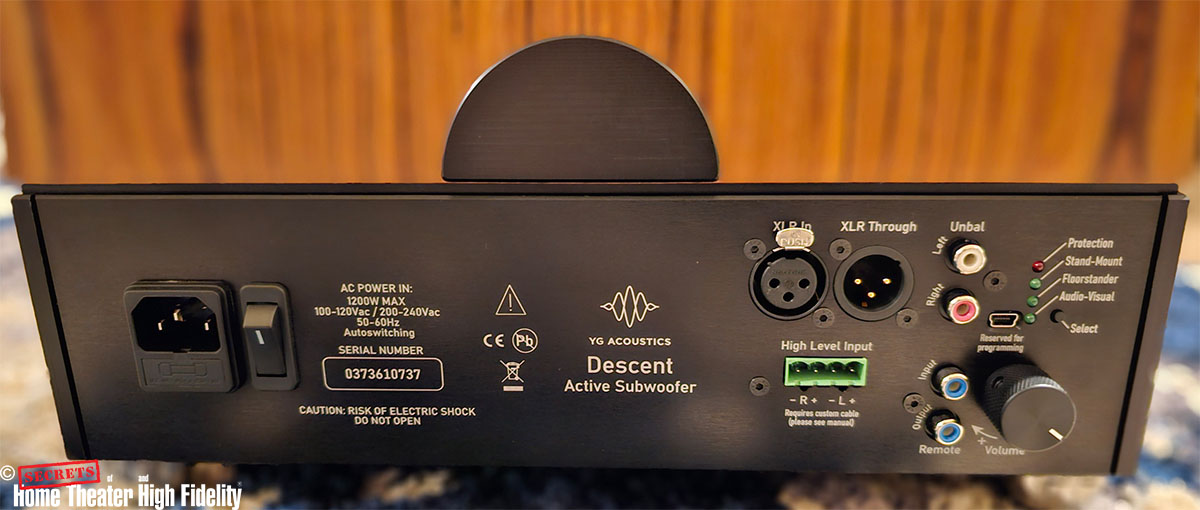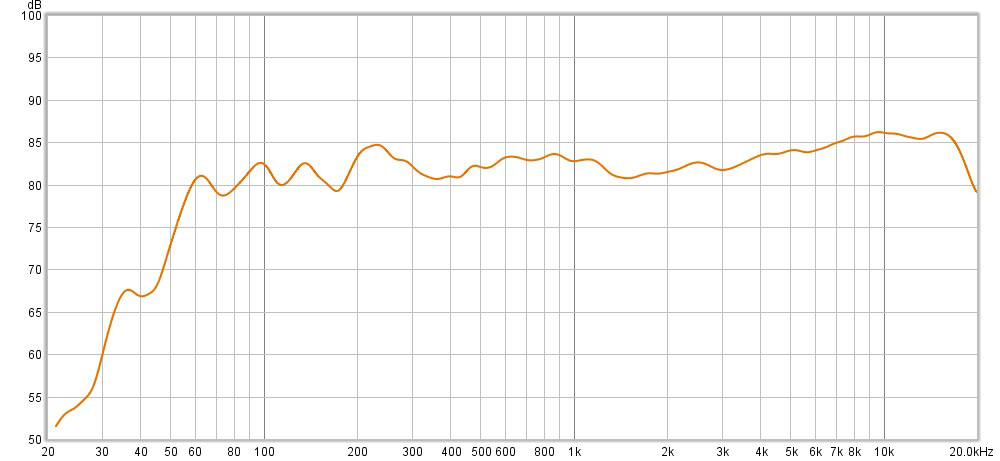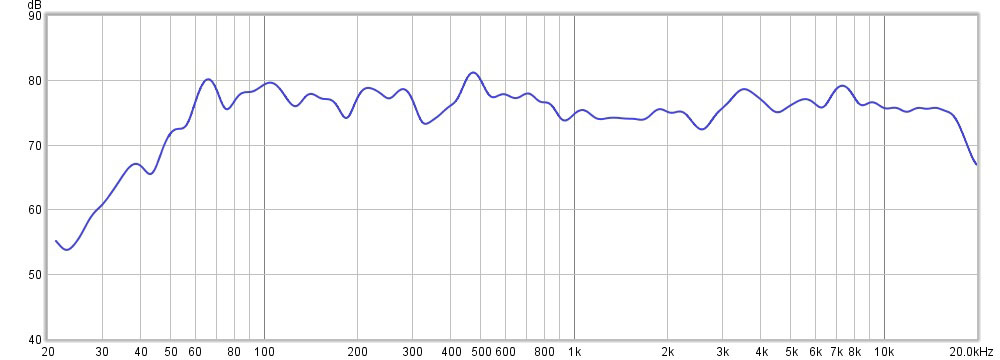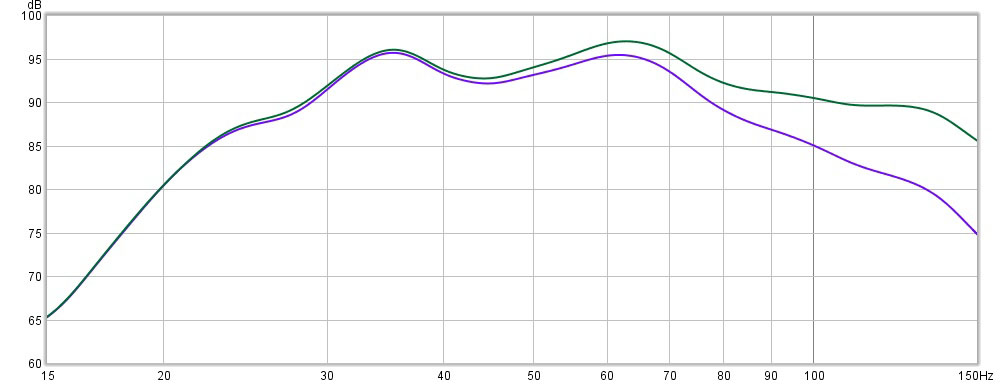The Peaks series currently includes five speaker models, consisting of 2 stand-mounts (Cairn and Tor) 3 floor-standing (Talus, Ascent, Summit) speakers, and a powered subwoofer (Descent). Even though the products from the Peaks series are relatively more affordable than those from the top- of-the-line Reference series, they are not cheap by any means (the cheapest speaker model from this series, the Cairn, costs $8,500 per pair). However, these high asking prices are backed by the overall quality of the products. The high quality of the materials and the craftsmanship of the products, whose look and feel scream elegance, are immediately obvious. YG Acoustics seems to utilize its science and technology know-how effectively to achieve excellence in the thing that matters most for speakers, which is sonic performance. This review will further look at the features and performance of the Tor stand-mount speakers together with the Descent subwoofer up close.
YG Acoustics Tor Stand-mount Speakers with Descent Subwoofer Highlights
- High-quality materials and craftsmanship.
- Elegant appearance with excellent finish quality.
- Outstanding sonic performance.
Since its founding in 2002, YG Acoustics has successfully established a great reputation in the high-end audio industry. With meticulous design utilizing advanced technologies and the use of all-around high-quality components and materials in its products, it is not difficult to understand the company’s success in building a solid reputation in the field. There is a sense of uniqueness in YG Acoustics speakers, which seems to emanate from the passion to reproduce music in the best way possible. Quality and performance are the main drivers of the design with cost appearing to be a distant consideration, and thus, understandably YG Acoustics speakers typically carry price tags at the high end of the pricing spectrum.
YG Acoustics currently offers three product series, Reference, Peaks, and Live. The Reference series represents the company’s no-compromise design results using advanced materials, while the Peaks series reflects the company’s more affordable solutions relying still on the company’s quality-first philosophy. The Live series is a collection of complete speaker systems (speaker plus active controller: DAC, amplifier, and crossover), developed in collaboration with Bel Canto. All YG products are developed using cutting-edge science and technology on top of extensive listening tests. YG Acoustics uses heavily complex multi-domain computational modeling techniques and advanced measurement tools/techniques to rigorously optimize the in-house developed drivers, crossovers, and cabinet designs used in its speakers. As an engineer myself, I appreciate the rigorous and meticulous approach that YG Acoustics takes in designing its speakers.
The Tor speakers ($10,500/pair) and Descent subwoofer ($7,800 each) reviewed here are members of the Peaks series. For this review, YG Acoustics also included the dedicated stands for the Tor, which cost $1,500/pair. So, the whole Tor package (the pair of Tor and their matching stands) costs $12,000. Such expensive products should be handled extra specially, and YG does not disappoint in this department, treating its products with ‘white-glove treatment’. Literally, inside the top-notch product packaging, the company included white fabric gloves for careful handling of the speakers. Each speaker and the subwoofer are wrapped in soft black fabric, and they are very well secured from impact using relatively thick padding inside their boxes. I don’t know about you, but I tend to appreciate the products more when a company shows how much they care about their creations.
Tor speaker:
Type:
2-way passive stand mount/bookshelf speaker
Dedicated stand available
Drivers:
1″ ForgeCore tweeter
7.25″ BilletCore woofer
Frequency Response:
37Hz – 40 kHz
Impedance:
Average 7 Ohms
Minimum 3.5 Ohms
SENSITIVITY:
88 dB
DIMENSIONS:
H x W x D: 16.7 x 9.1 x 11.8″ (425 x 230 x 300 mm)
FINISH OPTIONS:
Balanced oak, flamed rosewood, or Datuk ebony
Weight:
40 lbs. (18 kg) each
MSRP:
$10,500 /pair
Descent subwoofer:
Type:
Active subwoofer with DSP filter
Driver:
11″ (28 cm) BilletCore driver with 3″ (75 mm) voice coil, titanium former, and advanced magnet structure
AMPLIFIER:
1,000 W (0.0018% THD+N at 500 W)
124 dB SNR
INPUTS:
XLR in/passthrough
RCA in
INPUT Impedance:
2.2 MOhms (XLR)
54 kOhms (RCA)
HIGH-LEVEL INPUT:
High-level input L/R, Phoenix MSTB 2.5/4-ST-5.08 PRTD connector
Maximum input level: 50 Vrms
FREQUENCY RESPONSE:
18 Hz – 150 Hz
DIMENSIONS:
H x W x D: 17.5 x 15.7 x 18.7″ (445 x 400 x 475 mm)
FINISH OPTIONS:
Balanced oak, flamed rosewood, or Datuk ebony
WEIGHT:
110 lbs (50 kg) each
MSRP:
$7,800 each
Website:
Company:
SECRETS Tags:
yg acoustics, tor, descent, aluminum, loudspeakers, subwoofers
Tor is the larger of the two stand-mount speaker models in the Peaks series. It employs a two-way acoustic-suspension design utilizing a 1″ ForgeCore tweeter and a 7.25″ BilletCore woofer on the front baffle with the typical tweeter-above-the-woofer configuration. Both ForgeCore and BilletCore technologies utilize CNC precision-cutting machines to create driver parts from solid metal blocks. These technologies have been shown to lower distortion in the drivers. The crossovers inside the Tor (and the other YG Acoustics speakers for that matter) use high-quality components and are optimized for tweeter-woofer transition phase alignment, phase slope, and transient responses. YG Acoustics claims that through extensive computational modeling, an accurate phase alignment (within ±5 degrees) across one and a half octaves around the crossover point is achieved. Besides optimizing the crossover layout to minimize the component interactions, the crossover is also housed in a separate enclosure at the bottom part of the speaker. The crossover enclosure is damped by Sorbothane-like stand-offs, and the board itself is also damped with a sorbo-foam pad. It is essentially an external crossover, without the extra box and wiring. The speaker terminals in the form of a pair of five-way binding posts are located on the rear panel of this crossover enclosure. For an inside look at how YG Acoustics loudspeakers are put together, please check out Editor-In-Chief Carlo Lo Raso’s recent factory tour report.
As with the other speakers in the Peaks series, the Tor has a tapering cabinet shape with a narrowing width at the top. It sports a precisely machined and thick aluminum front baffle that is fitted into an inch-thick dense resin fiber cabinet wall. The top, sides, and rear parts of the cabinet panels are covered with smooth real-wood veneer available in ebony, rosewood, or oak. With the semi-gloss black front baffle and lower part of the cabinet, the wood-veneer finish creates an appealing two-tone appearance. The review samples have the rosewood veneer, which overall looks gorgeous. A simple knocking test on the cabinet reveals that it is very well-damped, which can be attributed to its thick cabinet wall and excellent bracing. At 40 lbs. each, the speaker weighs more than the typical speaker of this size. The overall quality of the construction of the speaker is impeccable. The Tor sits on 4 short metal feet that are screwed directly into its bottom panel.
The Tor’s optional dedicated stands are designed to optimally support the Tor speakers. They are milled out of aerospace-grade aluminum and finished in matching semi-gloss black as the front baffle and the bottom part of the speakers. Not only do these stands provide a solid foundation for the Tor, but they also look stylish. The rib pattern on the inner sides of the two pillars connecting the base and platform plinth gives a nice design accent. Metal cone feet to screw into the base plinth of the stands and metal coin-shaped spike-cups are provided. The platform plinth has grooves on its four corners that allow the feet of the Tor speakers to sit snuggly in them.
The Descent subwoofer included in the review package has a matching appearance with the Tor speakers with its slightly tapered box shape and two-tone semi-gloss black/rosewood finish. It is quite compact with its longest dimension (its depth) of slightly less than 19 inches. The Descent subwoofer is a sealed box design utilizing a front-facing 11″ BilletCore driver. The subwoofer houses a 1000 W class D amplifier equipped with a DSP feature to achieve the intended response. Four metal cone feet are provided as well as four metal spike-cups to prevent the sharp tip of the cones from scratching the floor. The subwoofer is well-braced and solidly built, and at 110 lbs., it is heavier than its compact size suggests. Departing from the typical boring rectangular/cubical subwoofer’s box shape, the Descent subwoofer brings a breath of fresh air to the style department. It is definitely one of the nicest-looking subwoofers out there.
The controls and connectors for the Descent subwoofer are located on the lower rear panel. The subwoofer can accept both line-level input signals, through the XLR or RCA connectors, and high- level input signals through its specialized Phoenix MSTB 2.5/4-ST-5.08 PRTD connector. A cable for a high-level connector is not included in the box and an authorized dealer’s assistance is recommended for using this connection. As such, only the line-level input subwoofer connection was utilized during the review. An XLR throughput that replicates the signal from the XLR input is also available, allowing the Descent to be daisy-chained to another device accepting the line-level XLR input. The remote in/out connectors on the rear panel are not currently supported.
The Descent subwoofer is designed to be as easy to use as possible with only minimum controls provided in the form of a volume knob and a preset mode selector. The preset mode should be selected based on the application of the subwoofer. Three preset modes are available: Stand-Mount (for use with stand-mounted speakers), Floor-stander (for use with floor-standing speakers), and Audio-Visual (for use with an AV receiver/surround processor or any audio device with subwoofer crossover feature). This is about as minimum of a control scheme as I have ever seen in a subwoofer. No separate crossover frequency, roll-off slope, or phase adjustment is available. In a limited fashion, the crossover frequency and roll-off slope adjustments are essentially built-in to the preset modes. In my opinion, by trading off control flexibility for ease of use, the potential use for the Descent subwoofer becomes restricted. Although the manual states that the Descent subwoofer can augment speakers from other manufacturers, the lack of flexible control adjustments suggests that this subwoofer is designed specifically to complement the speakers from the YG’s own Peaks series. Although I did not experience any difficulty in integrating the Descent with the Tor, I still personally would prefer to see more control flexibility to allow for better integration of the subwoofer responses with those of the main speakers in a more complex placement situation. For example, the lack of phase adjustability in this case would limit the possible placement of the subwoofer in the room to achieve a smooth response transition with the mains.
Setting up the Tor speakers to get good sonic results was not difficult. I just positioned them in the usual stereo-speaker spots in my room and the result was good, although I felt the soundstage was a bit restricted. To get a better result, I played around with the speakers’ placement a bit. These speakers like to be spread out in the room more than other speakers I have tried. I ended up placing the speakers 9.5 ft apart from each other (my room is 16 ft wide), toed them slightly, and pulled them into the room such that their front baffles were about 4 ft away from the wall behind them. My listening position formed roughly an equilateral triangle with the two speakers. At their dialed-in position, the speakers projected a wide and deep soundstage effortlessly.
I found the Tor speakers to be neutral in their sonic presentation and very revealing. Their revealing nature conveyed the sonic characters of the upstream electronics used to drive them more vividly than most speakers I have tested. The sources used during the review were PS Audio PerfectWave Transport and AURALiC Aries G1 streamer, mated with the PS Audio DirectStream DAC feeding the PS Audio BHK Signature preamplifier. Several amplifiers were used to drive the speakers, including the oldie-but-goodie Krell KAV-2250 (250 W/channel into 8-ohm, 500 W/channel into 4 ohm), the Bel Canto REF500s (250 W/channel into 8 ohm, 500 W/channel into 4 ohm), and the Michi X3 integrated amplifier (200W/channel into 8 ohm, 350 W/channel into 4 ohm). Pairing the Tor with these amplifiers yielded equally excellent sonic results but with different tonal characteristics and presentation. Hence, depending on preference, your choice of the winning combination might be different than mine. With the Bel Canto REF500s, the Tor exhibited a tilt toward a warm midrange tonal character, solid treble extension, and a slightly forward presentation. Driven by the Michi X3, I was also indulged by a slightly warm tonal character with a slightly laid-back presentation. The treble was airy and smooth with an ever so slightly recessed quality. Tome,the combination of the Krell KAV-2250 with the Tor fits best with my preference. I thought the Krell really brought out the best of Tor’s sonic attributes, leading to a neutral tonal characteristic, excellent treble detail, lively musical texture, neutral soundstage presentation, and great bass definition. Hence, I wrote my impressions below based on the pairing of the speakers with the Krell KAV-2250 amplifier.
I started by listening to the Tor speakers by themselves without the help of the Descent subwoofer. Despite missing the deep bass response, which was expected, the Tor speakers were quite impressive in their presentation of sonic balance across the rest of the audible frequency spectrum. There seemed to be no holes in the frequency bands they covered, and this corresponded well with their frequency response measurements. The single speaker’s nearfield measurement and the stereo setup’s measurement at the listening position are shown in the figures below. The nearfield measurement showed a relatively flat frequency response curve from the mid-bass to the lower treble regions. There was a bit of upper treble elevation, which might be by design to compensate for off-axis listening as well as treble energy absorptions as the sound waves travel from the speaker to the listener’s ears. This upper treble elevation was no longer observed at the listening position, leading to a remarkably flat frequency response (±3 dB) from about 50 Hz to 18 kHz. All these are testament to well-designed and excellently engineered speakers.
The clarity, detail, and transparency of the musical presentation through the Tor was nothing short of excellent. With its agility and dynamic sonic characteristics, the Tor did a great job of preserving musical textures while keeping the overall presentation smooth. Music seemed to always be presented at the intended pace and rhythm and never sounded dull. The Tor was also very adept in vocal reproduction. Be it female or male voices, they all sounded natural and palpable. The imaging capability of the speakers was impressive. They could effortlessly generate focused steady images and disappear in their soundstage canvas, which was wide and deep with excellent three-dimensionality.

Imelda May’s “Life Love Flesh Blood (2017)” album cover
The track Black Tears from Imelda May’s Life Love Flesh Blood album (2017), which featured guitarist Jeff Beck, exemplified the imaging capability of the Tor speakers. The projection of Imelda May’s voice at the center stage was focused and steady. The whole musical stage consisting of various accompanying instruments and featuring Jeff Beck’s strong guitar effects was unmistakably wide and deep. May’s strong mid-tone voice sounded clear, full-bodied, and natural. The bass sounded tuneful with sufficient attacks and the rendition of treble was detailed and extended. The track sounded viscerally impactful through the Tor leading to a very lively presentation.

Sara K’s “Play On Words (1993)” album cover.
The track If I Could Sing Your Blues from Sara K’s Play On Words album (1993) further highlighted the dynamics, midrange purity, and imaging capability of the Tor speakers. The loud and soft portions of the track were organically rendered. Sara K’s voice sounded palpable, projected intimately at the center image of the presentation. The sound of the saxophone in the track appeared from the right deep backstage with the other instrumental accompaniment portrayed closer to the stage front. The spacious atmosphere rendition depicted by the speakers was among the best I have heard.

Beabadoobee & Laufey’s “A Night to Remember (2023)” single cover.
The Tor speakers also skillfully navigated through the swaying jazzy melody of the track A Night to Remember, which was the result of the collaboration between the British singer, Beebadoobee, and the Icelandic singer, Laufey. The voices of the two singers sounded natural and their imaging was spot on with each singer’s voice projected to emanate from slightly to the left and right of the center stage. The sense of space as well as the separation among the instruments in the complex passages of the track, where all the instruments came together, was rendered beautifully by the speakers.
The Tor’s bass was articulate, and I thought was sufficient for most music. Only for music with deep-bass content did I feel the need for some bass augmentation. When called for, the Descent subwoofer filled in the void of the Tor speakers in the deep-bass region with good authority. The nearfield frequency response of the Descent subwoofer (see figure) showed that it produced useful bass extension down to the low 20-Hz region. In the Stand-Mount mode, the way it was used here, the Descent’s upper-frequency response started to roll off at about 75 Hz. I did not find this bit of bass overlap between the Tor speakers and the Descent subwoofer to be objectionable. In fact, this slight overlap increased the overall bass-response definition. If you have a preamplifier with an adjustable subwoofer crossover frequency, like in most surround processors, you might want to leave the Descent in the Audio-Video mode (which has frequency roll-off starting at about 150 Hz), and just use the preamplifier’s subwoofer crossover setting adjustment to achieve speaker-subwoofer blend to your liking.
A single Descent subwoofer with its powerful onboard amplifier was more than sufficient to generate a prodigious bass response in my relatively large room. Even at loud volumes, the Descent subwoofer maintained its composure well, producing bass with excellent articulation and tautness. Never once did I hear the bass of the Descent sounding sloppy or unnecessarily boomy.
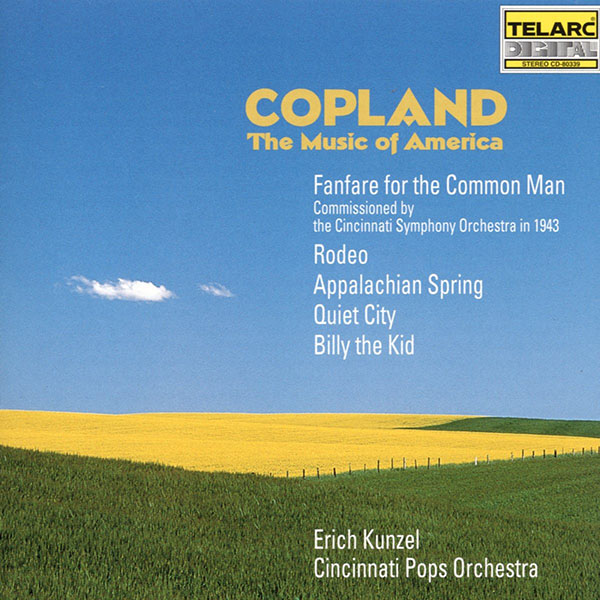
Erich Kunzel and the Cincinnati Pops Orchestra’s “Copland: The Music of America (1997)” album cover.
The combination of the Tor speakers and Descent subwoofer seemed to be at home with all types of music. With an excellent deep-bass foundation from the Descent subwoofer, this combo never sounded too small to handle playback of large orchestral music. Fanfare for the Common Man from the album Copland: The Music of America by Erich Kunzel and the Cincinnati Pops Orchestra sounded grand played through the Tor-Descent combo. The track sounded dynamic, and the Descent subwoofer conveyed the visceral impact of the big drums in the music convincingly. The ability of the speakers-subwoofer combination to transform my listening room into a large orchestral hall with the accurate presentation of its acoustics was especially indulging.
While value is in the eye of the beholder, there is no denying that the Tor stand-mount speakers and Descent subwoofer package from YG Acoustics delivers top-notch quality in both form and function in spades.
- Impeccable build quality and finish
- Use of all-around high-quality components and materials
- Outstanding all-around sonic performance (Tor)
- Awesome imaging capability (Tor)
- Prodigious yet articulate bass (Descent)
- More bass adjustment and control features (Descent)
The Tor speakers seem to check every box on the list of attributes that high-fidelity stand-mount speakers should have. Skillfully designed and meticulously fabricated using advanced technologies and materials, the speakers look elegant with their first-rate build quality and excel in many aspects of their sonic performance. The Tor speakers adeptly deliver excellent sonic balance, great dynamics, outstanding transparency, and awesome imaging capability. These are speakers that seemingly do everything right with only their physical dimension limiting their capability for delivering the deepest bass. The addition of a Descent subwoofer easily eliminates this very limitation. Despite featuring only limited controls, a properly set up Descent subwoofer complements the Tor speakers seamlessly, augmenting the deep-bass response with great articulation and authority.
Overall, the Tor speakers and the Descent subwoofer form a potent combination that delivers excellent overall sonic performance. While they are not cheap, the all-around high quality that comes with the price is undeniable. Their elegant look, excellent build quality, and outstanding sonic performance easily win my hearty recommendation.


